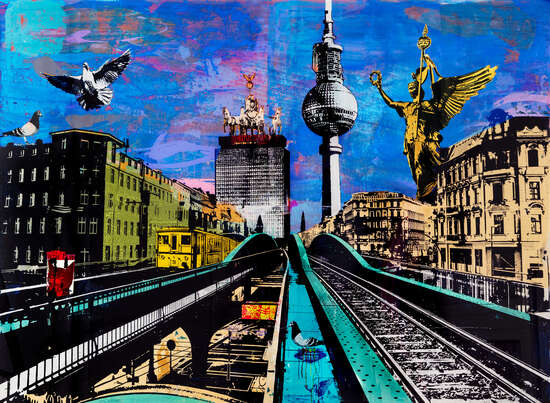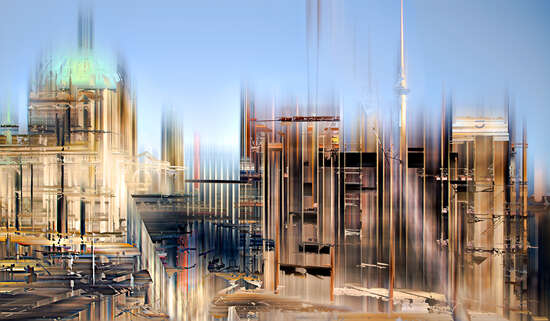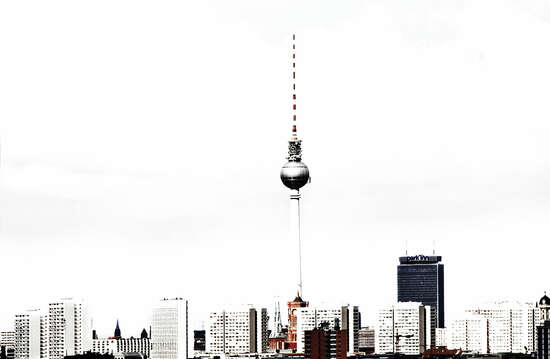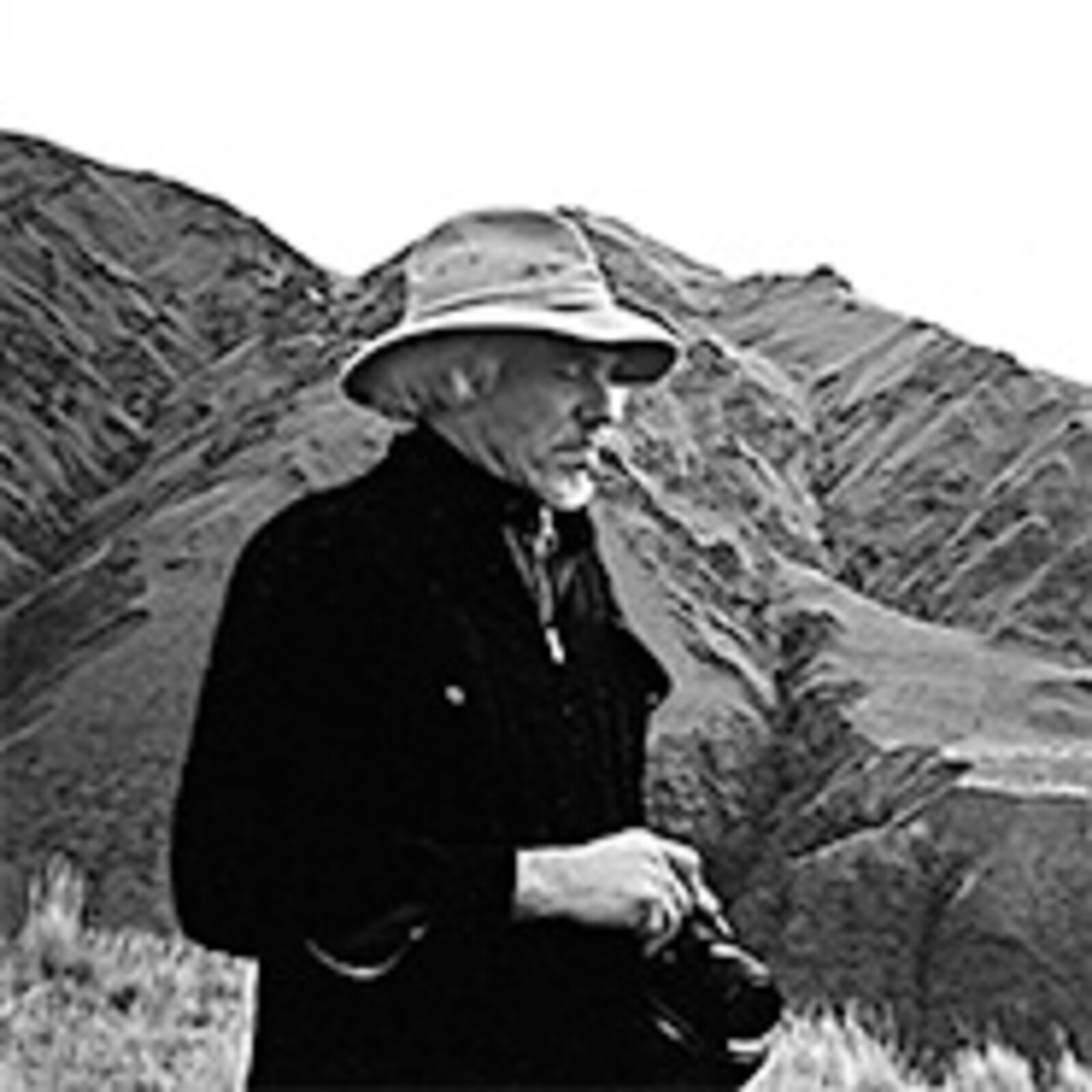READY TO HANG
Out of the box, all LUMAS artworks are ready and easy to hang.
SECURELY PACKAGED
LUMAS works are always packed to the highest standard to make sure it arrives as perfectly as it leaves us.
ARTIST SUPPORTED
Your purchase supports the free and independent work of your favorite artist.
14 DAY RETURNS
Easy 14 day returns to make sure you are satisfied with every purchase.
BACKGROUND INFORMATION
One might say that director, author, and photographer Larry Yust has been creating visual encyclopedias for years – that’s how exactly he documents the streets. There might be something to that theory: His father, Walter Yust, was once an editor of the Encyclopedia Britannica and passed the reference book gene on to his son. Yust’s passion for film also came courtesy of his father, who gave him a Super8 camera when he was a teenager. Larry Yust was born is Philadelphia and grew up in the suburbs of New York and Chicago. He studied Theater Arts at Stanford University and was an officer in the army for two years. He worked in television until he was able to start making his own films. The [Elevations] are essentially free of perspective and cannot be achieved in any other way. They provide a new way of looking at the world.
Larry Yust TECHNIQUE The World in Photographic Elevations Fascinated by New York, Rome, Venice, Paris, Berlin, and St. Petersburg, Larry Yust found a technique for capturing their streets. He calls these pieces Photographic Elevations. At first, they may seem like classic panoramas, but they have much more to offer: complexity, a wealth of details, and emotions. To capture the beauty of the everyday, Yust uses his experience as a director. In film, a long tracking shot could be used to show all the individual images that make his street scenes so lively. A movie camera shoots 24 frames a second, and Yust imitated a tracking shot in still photos. He takes up to 100 overlapping pictures from different camera positions. Then, he puts the pictures together digitally. A simple idea that creates an amazing effect. The pieces have no forced perspectives. They show us a new way of looking at the world and transmit the illusion of finally being able to see the big picture.
ABOUT THE WORK
Father & Son. Behind the Hollywood Sign #1
Director and photographer Larry Yust and his son Alexander collaborated artistically to create a piece that offers a new perspective on a well-known landmark. The Hollywood sign is an internationally renowned symbol, which is most often presented against the backdrop of a blue sky and typical California vegetation. In Alexander and Larry Yust's work, however, the viewer looks in the opposite direction, toward the Hollywood Hills, the Hollywood Reservoir, and the seemingly infinite metropolis of Los Angeles - its skyscrapers rising out of the morning fog.
The father and son duo exhibit a complimentary and balanced dynamic. Together they decided on a panoramic format, stringing together countless individual shots to create a vastness that the human eye cannot grasp with a single glance, but which does impressive justice to the size of Los Angeles.
Moscow Metro
With their magnificent architecture, Moscow’s world-famous metro stations are a dream subject for the master of “photographic elevations”. Larry Yust shows us elaborately decorated platforms as we could never see them with the naked eye – as complete cross-sections. Opened in 1935, the Moscow underground now transports 2.4 billion passengers a year. It is both an historical monument and a pulsing artery of the European continent’s largest metropolis.
USA EAST
Decades ago, the pulsing metropolis New York ignited Larry Yust’s passion for film and for life. There, the artist – who is now over 80 years old – began his career as a film director. Since 2011, he has been revisiting the locations that inspired him back then in order to capture them in an impressive series of photographs.
Yust’s photographic work impressively transmits the urban diversity of New York City’s streets: Pedestrians hurry through the famous shopping district on Fifth Avenue, stroll through Bryant Park, and queue in front of the ticket booths at Grand Central Station. These are fleeting moments, blinks of an eye that never return. The colourful lighted billboards at Times Square and the Manhattan skyline evoke memories of New York, even in those who have never been able to visit it. Yust’s pieces consist of numerous individual photos that are put together with a computer. That way, they hold more detail and complexity than you could make out with the naked eye if you were there in person.
Cuba
Nowhere are grandeur and decline so close to each other as they are in Cuba. American filmmaker and photographer Larry Yust achieves the impossible in his photos of Cuban streets: capturing the glory of the past and the hopeful future at the same time. The previously grandiose houses tell their moving tales.
In Havana’s old town, Yust found these decaying architectural remnants of the independent Spanish colony, the American years, and revolution. The buildings give the city their special charm and ubiquitous patina. At first, it appears as if the shots were composed at whim, but Yust leaves nothing to chance. His complex pieces are the result of meticulous selection, exactly planned camera positions, and precise editing.
USA WEST
You can’t do anything in Los Angeles without a car. But film director Larry Yust’s photographs prove there’s plenty of good reasons to get out and take a closer look. In them, he really highlights the city’s oft-overlooked architectural nuances.
With a filmmaker’s intuition and the precision of a photo artist, Yust brings out the sights that tend to get lost in the traffic and the hustle and bustle along the streets of L.A., San Francisco, and Las Vegas.
VITA
Larry Yust was born in Philadelphia, grew up in the suburbs of New York and Chicago, graduated in theater from Stanford University, is married and has three children. He lives in Los Angeles where he works as a writer and director of motion pictures. He developed his process of "Photographic Elevations" in order to photograph Paris Metro Stations. His book, METRO, is published by Gingko Press.
Yust makes his "Photographic Elevations" by walking or riding along the subject to be photographed on a line parallel to it, and shooting overlapping shots with his camera always aimed directly toward it. Yust then assembles the individual shots into a single image in a computer. The number of shots in one of his elevations ranges from ten to a hundred or more, depending on the length and complexity of the subject.
"Photographic Elevations" are not the same as panoramic shots (which are taken from a single point of view) in that wherever you look at the elevation, you are viewing the elements in it essentially straight on, seeing them with a minimum of distortion. It is a view that is impossible to achieve in nature, and therefore is one that provides a different way of looking at the world.
Yust has had one man shows at the LA County Museum of Science and Industry, the Fowler Museum at UCLA and the Louvre in Paris. His work is on permanent display at the American Visionary Art Museum in Baltimore.
YUST BIO
Ever since I was a small child, I have never been able to call a day complete unless I have made, created something - an object, an idea - during the course of it. As a child, I took whatever I had made that day to bed with me. At first crude drawings, then stories I had written or miniature houses I had built out of cardboard. As a young teenager, I published a monthly magazine, printed first on a Ditto machine, and then on an old Chandler and Price letterpress my father bought for me. Later, I painted for a while in oils , mostly buildings and street scenes. When my father bought an eight millimeter movie camera I started making movies , editing them crudely on a tiny viewer. In high school I edited the school paper and sang in musical shows. At college, I took a degree in theater, specialized in set design and lighting, wrote plays and directed a couple of them, acted and sang. After graduating, I spent a season in summer stock, doing lighting and set design, and singing in musical shows. Then a time in New Orleans, working in a printing house, then a time in Albuquerque and Tijuana directing local television, then two wasted years as an officer in the army, the last spent at the old Astoria Studios in Queens waiting to direct training films that were never made, then back into directing TV in Washington and from there into movies. The first commercial films I wrote and directed were made for use in schools. A series I made of dramatizations of classic short stories and plays - such authors as Hemingway, Dostoyevsky, Conrad, Ionesco and so on - brought me to the attention of Hollywood and led to my writing and directing features, documentaries and television dramas.
I always keep a tight rein on the art direction for my films and personally scout to find the locations I need. The photography I do recording those locations led to the photography for its own sake which I have been doing for the last ten or fifteen years, some of which I have agreed to sell through LUMAS. I still direct movies, but the creation of my "Photographic Elevations" gives me equal pleasure and sense of accomplishment.
I had always wanted to photograph the Paris Metro Stations, having learned to love them while I was directing a film there, and I worked out a way to do it several years ago after I had started doing my darkroom work on a computer. I walked along the platforms of the stations taking overlapping images which I then assembled into what appears to be a single image working in Photoshop on a Mac computer. Thus, "Photographic Elevations" were born. So named because they resemble architectural elevations, in that wherever you look at the image, you are looking directly at it. Multiple viewpoints - as opposed to a panorama with its single point of view - that provide a way of seeing things that you cannot achieve in nature.
I was born in Upper Darby, Pennsylvania, just over the city limits from Philadelphia, and moved, or was moved to New York City when I was ten days old, grew up in a suburb there and then in a suburb of Chicago. I went west to attend Stanford University, went back east for several years, and then moved to Los Angeles and have stayed there, with frequent trips to Paris and Venice, and to whatever other places in the world my movies or photography take me. I married a lady from an old and politically prominent family in Colombia who spent her early married years as Consul General for Colombia in Los Angeles. We have three children, two girls and a boy. One is a publisher, one an architect, and one the preperator for the galleries of the Motion Picture Academy. Our home in Los Angeles is made out of mud, a two story adobe built in 1920 in the Tuscan style by an imported crew of Italian artisans.
Two books of my photographs have been published, Salvation Mountain, The Art of Leonard Knight, documenting the work of a visionary artist who paints a mountain, not on canvass, but painting on the mountain itself; and METRO, Photographic Elevations of selected Paris Metro Stations.
I have had one man shows at the Los Angeles County Museum of Science and Industry, Municipal Color and Light; the Fowler Museum at UCLA, Street Seen, Photographic Elevations of Los Angeles; and at the Lourve, METRO. Some of my photographs are permanently displayed at the American Museum of Visionary Art in Baltimore.
I still sometimes take my work to bed with me.
Larry Yust
Los Angeles 9/10/07











 No thanks, I would like to stay on this site.
No thanks, I would like to stay on this site. Yes, I would like to switch.
Yes, I would like to switch.